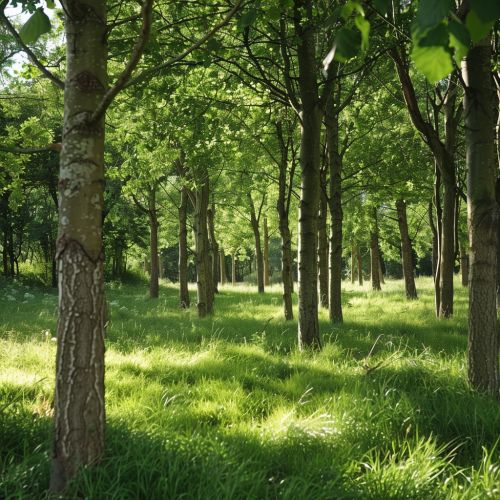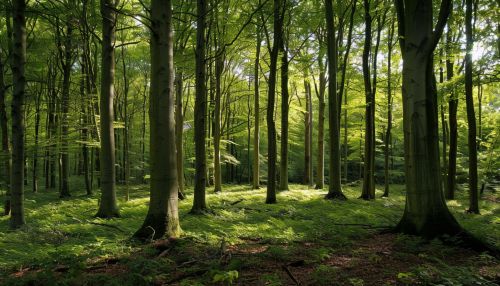Coppicing
Introduction
Coppicing is a traditional method of woodland management which exploits the capacity of many species of trees to put out new shoots from their stump or roots if cut down. This practice has been in use since prehistoric times and continues to be an important way of producing firewood and other products.
History
The origins of coppicing are unclear, but the technique was in use in prehistoric times. The system was likely developed in the Neolithic period around the 6th millennium BC. After the introduction of agriculture, farmers used coppicing as a way to create a sustainable supply of wood for various uses. In the medieval period, coppiced woodlands were commonly found in Europe and were used to produce charcoal for the burgeoning iron industry.
Method
Coppicing involves cutting trees down to a stump, known as a 'stool', at a height of 2-4 inches above ground level. After cutting, the remaining stump is typically covered with soil. This encourages the production of new shoots, which are then allowed to grow for a period of years before being cut again. The cycle of cutting is known as the 'coppice rotation', and its length can vary from a few years to several decades, depending on the species of tree and the intended use of the wood.
Species
Many tree species are suitable for coppicing, including oak, ash, beech, birch, hazel, willow, sweet chestnut, and hornbeam. The choice of species depends on the local climate, soil conditions, and the intended use of the wood. Some species, such as oak, ash, and beech, can produce high-quality timber suitable for furniture making, while others, such as willow and hazel, are used for wickerwork and fencing.


Benefits
Coppicing has several benefits. It provides a sustainable source of wood, as the trees are not killed by the cutting but regrow from the stump. This makes coppicing a form of renewable resource management. Coppiced woodlands are also rich in biodiversity, as the open canopy allows sunlight to reach the woodland floor, encouraging the growth of a wide variety of plants and providing habitats for many species of birds and insects. Moreover, coppicing can help to preserve ancient woodlands, as the regular cutting prevents the trees from reaching maturity and dying of old age.
Modern Uses
In modern times, coppicing has seen a resurgence of interest due to its environmental benefits. It is now often used in the management of public woodlands and parks, and by private landowners who wish to maintain their woodlands in a sustainable way. Coppiced wood is also used in crafts and in the construction of rustic furniture and fencing. In recent years, there has been interest in using coppiced wood as a source of renewable energy, in the form of firewood or wood pellets for biomass heating systems.
Challenges
Despite its benefits, coppicing is not without its challenges. It requires a high level of skill and knowledge to carry out effectively, and the work can be physically demanding. In addition, the long rotation periods mean that it can take many years to see the results of the work. There are also legal and regulatory issues to consider, as in many countries the cutting of trees is subject to strict controls.
